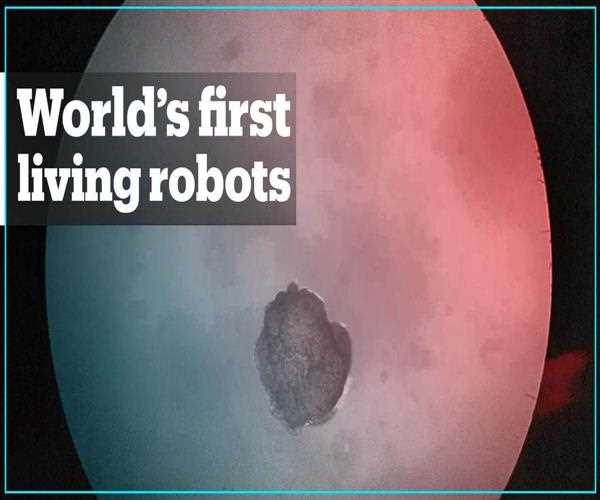Search here

17-Jan-2020 , Updated on 1/19/2020 8:54:17 AM
Next Generations Robots - Xenobots, the Living Robots
Till now we all knew that robots are made up of some sort of steel bodies, sensors and a computerized brain powered by a power supply. For this generation, this kind of robots is going to outdated, because scientists have created the world's first living robot. These robots have the ability of self-healing themselves. These are made by using the stem cells from frogs.
Scientists have named these robots as Xenobots after the African clawed frog - Xenopus laevis, from which they take their stem cells, the machines are not exactly a millimeter (0.04 inches) wide - sufficiently little to go inside human bodies. They can walk and swim, make due for quite a long time without nourishment, and work together in gatherings. The Xenobots are little, submillimetre-sized masses containing somewhere in the range of 500 and 1,000 cells that have had the option to scoot across a petri dish, self-heal out, and even carry minute payloads. These xenobots are not normal for any living life form or organ that is experienced or made to date. They can be used to move medicine around a patient's body or tidy up contamination from the seas, for example.

The designing of the xenobots required the utilization of a supercomputer, and programming that could basically assemble two or three hundred frog heart and skin cells in various arrangements (to some degree like LEGO blocks), and mimic the outcomes. Even though scientists have made living robots, still, the least successful setups of robots with cells were hurled out, and the best were kept and refined until they were as good as they were going to get. These Xenobots were tested by leaving it in an aqueous environment for up to a week and they survived without any requirement of additional nutrients or external power source since they were controlled by their own 'pre-stacked' vitality stores as lipids and proteins. They were even tested by making holes in it and were able to heal itself back in a fraction of seconds. They are even entirely biodegradable after their death.
Designing robots out of such living materials could prompt tremendous changes in the manner that technology is utilized. However, such advancements could be harnessed in manners that we don't comprehend, prompting unintended results. On the off chance that the ascent of the robots happens, the end times might be a more squelchy issue than sci-fi authors have set us up for. Even though, such inventions can be great achievements for mankind but can also be a long-living threat for the same.
[ READ MORE :- Upcoming Technologies That Can Actually Change Your Way Of Living ]
Join Our Newsletter
Subscribe to our newsletter to receive emails about new views posts, releases and updates.
Copyright 2010 - 2025 MindStick Software Pvt. Ltd. All Rights Reserved Privacy Policy | Terms & Conditions | Cookie Policy
